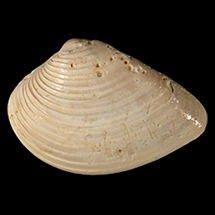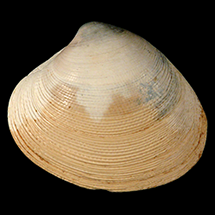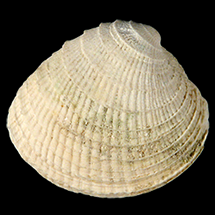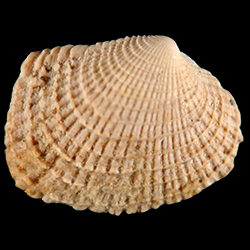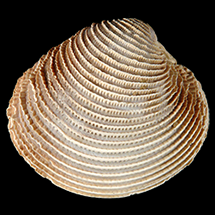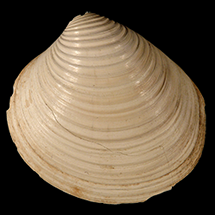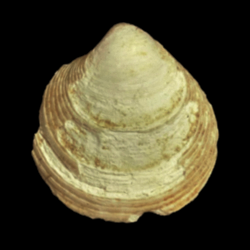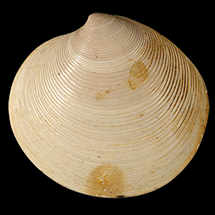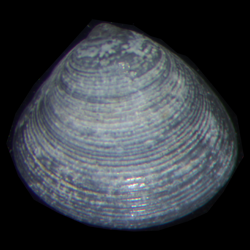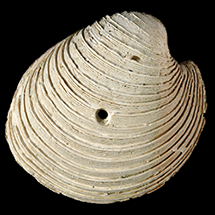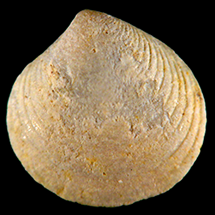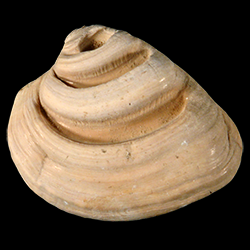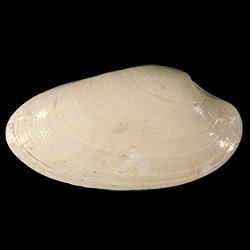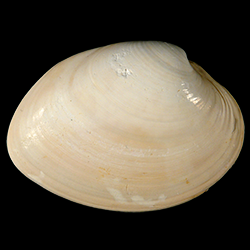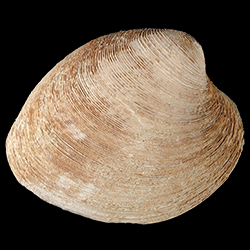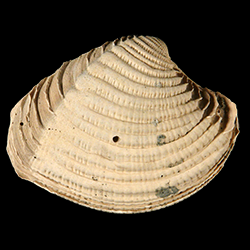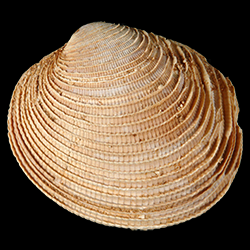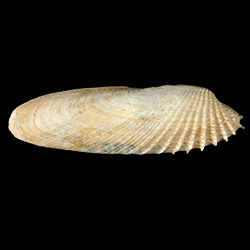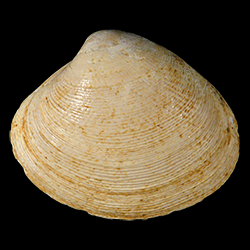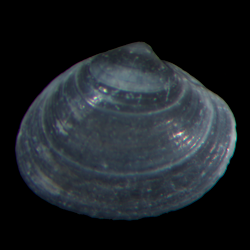
Veneridae

- Phylum: Mollusca
- Class: Bivalvia
- Order: Imparidentia
- Family: Veneridae
Overview
Common name: Venus clams
Key morphological features: The Veneridae range in size up to ~170mm. As the most diverse extant bivalve family, Veneridae species come in many shapes and sizes, ranging from thin and delicate to thick and robust, relatively compressed to inflated, and subcircular to trigonal in outline. All venerid shells are aragonitic, and they are almost always equivalve. Exterior sculpture varies between species from completely absent to commarginal, radial, or cancellated patterns of ribs and folds. Some species also develop spines or nodose textures, particularly on the posterior end of the shell. Valve interiors almost always have a pallial sinus ranging from shallow to deep, and interior shell margins can be smooth, or may have commarginally striated or denticulate patterns, sometimes reflecting exterior sculpture. Species of Veneridae are isomyarian, and can have strong or weak hinge plates that are always heterodont, and generally contain three cardinal teeth, the arrangement of which can be diagnostic of different subfamilies. Numerous species also have anterior lateral teeth, but many of these lack posterior lateral teeth. Source: Mikkelsen, P.M., and Bieler, R. 2008. Seashells of Southern Florida: Bivalves. Princeton, New Jersey: Princeton University Press. 503 pp.
Geological range: Cretaceous to Recent (Mikkelsen & Bieler, 2008).
Geographic distribution: A distributional map for modern Veneridae may be accessed from OBIS. A distributional map for ancient Veneridae may be accessed from the Paleobiology Database.
Diversity: There are 768 recognized living species of Veneridae and 107 genera (WoRMS database, unvetted). The Paleobiology Database recognizes 151 fossil genera and 1809 fossil species of Veneridae (unvetted).
Paleoecology: The Veneridae encompass species with several different life modes, but all are suspension feeders. Most species are mobile and shallowly infaunal in soft to coarse estuarine or marine sediments, but some live byssally attached to substrates or within rocks, corals, or other hard substrates. The Veneridae can be found worldwide, mostly at temperate to tropical latitudes. Source: Mikkelsen and Bieler (2008).
Phylogenetic status: Monophyletic. The molecular phylogenetic analysis by Mikkelsen et al. (2006) supports the monophyly of Family Veneridae.
